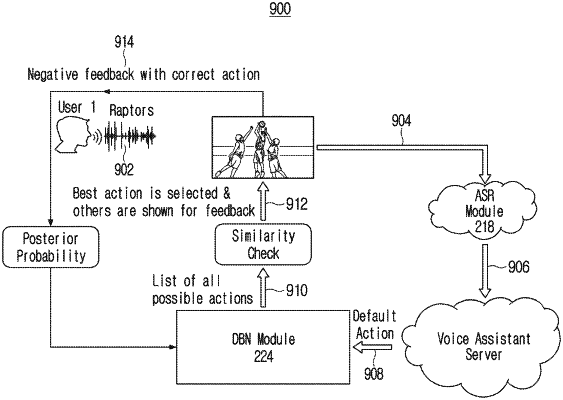| CPC G10L 15/144 (2013.01) [G06F 18/22 (2023.01); G06F 18/24137 (2023.01); G06N 7/01 (2023.01); G10L 15/063 (2013.01); G10L 15/075 (2013.01); G10L 15/083 (2013.01); G10L 15/183 (2013.01); G10L 2015/0631 (2013.01); G10L 2015/0635 (2013.01)] | 19 Claims |

|
1. A method to adaptively predict non-default actions against unstructured utterances by an automated assistant operating in a computing-system, the method comprising:
extracting voice-features based on receiving an input utterance from at-least one speaker by an automatic speech recognition (ASR) device;
identifying the input utterance as an unstructured utterance based on the extracted voice-features and a mapping between the input utterance with one or more default actions as drawn by the ASR;
obtaining at least one probable action to be performed in response to the unstructured utterance through a dynamic bayesian network (DBN);
receiving a review of the recommended at least one probable action from the speaker of the input utterance;
receiving a negative feedback towards the recommended at least one probable action in response to the input-utterance from the speaker during the reviewing; and
updating a global model associated with the DBN based on the negative feedback,
wherein the negative feedback corresponding to rejection of all of the recommended actions by the speaker and rejection of high recommended actions followed by acceptance of less recommended action by the speaker.
|